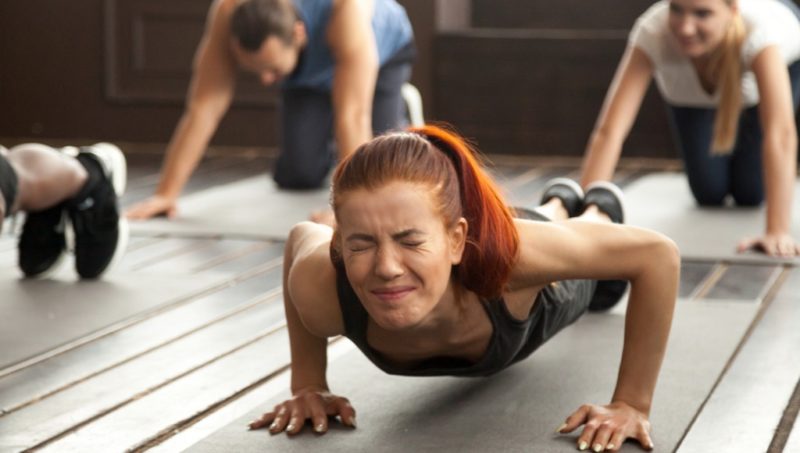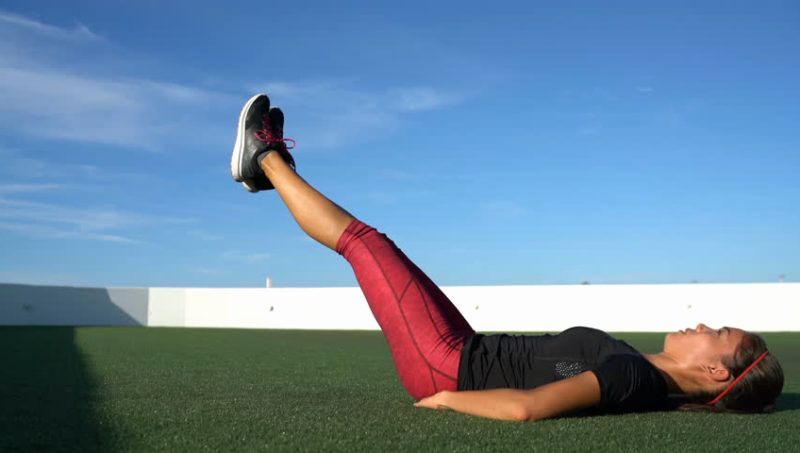You Got Injured Doing Yoga… 6 Reasons Yoga Might Not Be Good For You
If you’ve injured yourself doing yoga, you’re not alone.
According to National Institute for Health (NIH) 29, 590 yoga related injuries were seen in hospital emergency rooms in America between 2001 and 2014.
That’s emergency room data.
That doesn’t include the thousands of people injured who never go to the ER.
If you’re struggling with pain or injury from yoga this article is for you.
Here are 6 Reasons Yoga is Hurting You
1 – Your Body Isn’t Ready For Yoga
As a physical therapist, I am often asked if yoga is good or bad.
And my usual response is “how would you know?”
My question stems from an understanding that we are complex beings.
People “do” yoga for a lot of reasons. Why are you doing it? Improved flexibility, time with friends, its good for you, meditation?
Often people are often drawn to yoga because they are flexible, and they’re good at it.
They can do all the positions or poses easily. If this is the case, yoga is probably not the best exercise form for you.
Why?
Because you are already overly flexible. Making you more flexible can increase your risk of injury.
What you need instead is develop muscular control and coordination to go with your flexibility.
If you are tight or relatively inflexible then yoga can be helpful at gaining increased flexibility.
However, when you perform yoga you need to be careful with how and where your body is achieving that flexibility.
We often over stretch one area to make up for a tightness in another area.
This may accomplish a particular pose, but it doesn’t make you healthier. It creates a greater potential for injury by weakening your support system.
Ultimately, our understanding of our own body is the key to successful exercise and treatment programs.
Take the time to understand your body and then use your body’s response to the exercise as the determination of whether it is good or bad for you, not someone’s opinion.
2 – Your Body is Tight Because Something Bigger is Going Wrong
A key to understanding how to take advantage of any program including yoga is to have a sense of what you are trying to accomplish.
When trying to gain flexibility, you should first ask your body why it’s tight?
Where is it tight?
What tissues are working too hard and which ones are underworking?
We often look at tight muscles or tissues as bad.
But why?
These muscles are adapting to the stresses you place on them. Before you stretch muscles, first figure out why they are tight.
Look for weak muscles – tight muscles are often compensating for weak ones.
As a physical therapist, I often find tight muscles are responding to an instability or imbalance around a joint. If you want to truly improve the muscles flexibility you need to correct the instability or imbalance first.
This is a muscle coordination problem and is made worse with stretching.
For example: I recently had a client come into my clinic suffering with back pain following yoga. She was a 40 year old yoga instructor, very flexible. Except for her lower back which she reported as very tight and sore particularly after stretching. After evaluating her, we discovered she was overly flexible in her back. Her back muscles were tightening up to protect her.
Our treatment focused on muscle control and limiting stretching through the back.
She was pain free in 1 week.
We then helped her adjust her yoga program to increase more muscle control and body awareness. She continues to teach yoga, but is much more aware of how to make corrections in her body and in her clients to avoid injuries.
3 – It’s All About Nailing the Position, Not What Your Body Can Handle
An inherent flaw in yoga is the tendency to do a position or pose because it is good for you.
The position however may put too much stress in one area of your body and not enough in others.
Your unique physical development and adaptations over your lifetime will cause the way you perform the pose to be different from anyone else!
Previous injuries, postural issues, bone and joint issues should all be considered when performing any exercise including yoga.
What we often see in these types of full body stretches is an area of hypermobility (excessive flexibility) makes up for an area of hypomobility (tightness or restriction).
Further stretching often increases flexibility in the area or tissue that is already moving too much and not in the tight area. This leads to instability and injury in the overstretched tissue.
4 – You do Yoga as Your Only Form of Exercise
If yoga is your only form of exercise you are missing out on the other physical needs of your body.
Cardiovascular fitness, strengthening, endurance training, coordination and balance work are all necessary to developing a physically healthy body.
The application of your health and fitness program should focus on the actual improvement or enhancement of your biomechanical integrity and performance in all aspects of life and sport.
Your body is healthy when all of your systems are working optimally and interacting with each other in an optimal way.
If yoga is your only form of exercise, you often end up with a hyper flexible body without the muscular strength and control to handle your body when you are active playing sports or functioning in life. When life requires you lift or carry children or stuff, you may suffer injury because you have not developed the muscular endurance and strength.
Your joints have nerve sensors that tell your body where you are in gravity and about when to tell the muscles to contract to protect the joint. If you over stretch the joint capsule and muscles, you can put your self at greater risk of injury.
Recently, a client in his late forties presented with chronic hamstring strain.
His only exercise was yoga.
He was dedicated, even taught classes.
He became very flexible, but he lacked control over that flexibility and when he went to play tennis he strained his hamstrings. He let his hamstrings rest, continued yoga, and then tried running and pulled his hamstrings again.
He was told by his doctors to give up yoga and tennis.
He did not want to eliminate tennis from his life.
He was told by his tennis pro to come see me.
We began a program designed around regaining his strength and control of his hamstrings and surrounding hip and thigh muscles which allowed him to regain control and stop injuring his hamstrings.
He is now playing tennis without hamstring pain or weakness.
5 – You’re Flexible, But Need More Muscle and Coordination
Along the lines of the last reason, when we lengthen muscles we need to develop the strength of those muscles throughout the full range of motion.
We often see bodybuilders who lack flexibility and we see yoga instructors who lack the muscular strength to control their bodies under load.
Neither is good.
When we stretch, we can develop a stretch “weakness”. This Weakness is a neurological inhibition of the muscle and can lead to injury by making the body more vulnerable. It’s like putting the red light after the intersection, so instead of stopping you before the intersection and preventing you from running into traffic, you find yourself in the middle of the intersection, the traffic light didn’t do its job.
When we overstretch a tissue, we alter the nervous systems awareness and reactivity to the stresses on the joint and tissue.
This can lead to an injury when the muscle doesn’t respond in time to protect the joint from being overstretched and injured. So when we are doing flexibility work we need to also be working on strengthening, coordination and balance training to be sure to create healthy bodies.
6 – You Didn’t Adjust For What Your Body Can Handle
The key here is you need to make yoga work for you. To do that, you will need to be able to understand how your body is responding to the stretching and positions of yoga.
Developing your awareness of how and where you move, particularly understanding how to “feel” areas of tightness or weakness, learning how to develop your ability to adjust the exercise to enhance your body is critical to improving your health and performance with yoga and all forms of exercise.
So where to start?
My recommendation is to start with YOU!
Don’t give up the things you enjoy! If you enjoy doing yoga or any other activity, learn how you can take control of your body and get the benefits of being healthy and active!
Ready to invest in you! We can help.
Start by Mapping Your Injury in a Free 20 minute video conference.
In this conference session we get to know you and get to know your unique issues and root causes.
Get started today
Join us by following the link below to schedule your Free 20 minute “Mapping Your Injury Session”
Click here to schedule a Free 20 minute video conference
I look forward to talking with you,
Joe Millen PT MTC




